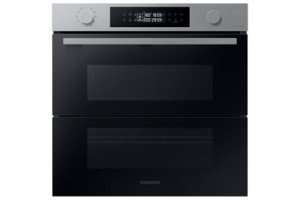The Modern Kitchen: A Guide to Built-In Ovens and Hobs
In today's fast-paced world, where cooking has ended up being an innovative outlet and a crucial part of life, having the right kitchen appliances is essential. Among these, built-in ovens and hobs stand apart as favorites in modern kitchens. This article intends to explore these appliances in depth, discussing their advantages, types, installation alternatives, and necessary tips for choosing the best models for your kitchen.
Comprehending Built-In Ovens and Hobs
What are Built-In Ovens?
A built-in oven is an appliance that is created to fit effortlessly into cabinets, providing a clean aesthetic in the kitchen. They differ from freestanding ovens and are understood for their adaptability, available in numerous sizes and performances. Built-in ovens can be electric, gas, or perhaps steam ovens, making them suitable for different cooking designs.
What are Hobs?
Hobs, likewise known as cooktops, are the flat cooking surfaces usually found on the countertop. Like ovens, hobs can be found in numerous kinds, consisting of gas, electric, induction, and even integrated styles. Their compact nature permits for flexibility in kitchen designs and designs.
Table 1: Comparison of Built-In Ovens and Hobs
| Feature | Built-In Oven | Hob |
|---|---|---|
| Installation Type | Integrated into kitchen cabinets | Installed on countertop |
| Cooking Methods | Baking, roasting, steaming | Boiling, frying, sautéing |
| Types | Single, double, combination | Gas, electric, induction |
| Aesthetic appeals | Modern, streamlined designs | Various finishes available |
| Control | Digital programs, handbook | Knob or touch control |
| Expense Range | Mid to high-range | Wide, depending upon type |
Advantages of Built-In Ovens and Hobs
Aesthetic Appeal
Built-in ovens and hobs contribute substantially to a streamlined look in modern kitchen areas. Their combination into kitchen cabinetry permits for a tidy and expert finish that matches any kitchen style.
Space-Saving Design
Among the pivotal benefits of built-in ovens and hobs is their space-saving design. As they are fitted straight into cabinets, they release up important counter space, making the kitchen feel bigger and more organized.
Adaptability in Cooking Methods
Built-in ovens come with various cooking functions, such as convection, grilling, and self-cleaning alternatives. Similarly, hobs offer varied cooking approaches, including fast boiling with induction innovation or the conventional flame of gas hobs. This flexibility allows home cooks to explore a wide range of cooking techniques.
Boosted Safety Features
Numerous modern built-in hobs and ovens featured sophisticated security features, such as automated shut-off, cool-touch doors, and kid locks. These features boost security, particularly in homes with children.
Selecting the Right Built-In Oven and Hob
Choosing the best built-in oven and hob for your kitchen includes numerous factors to consider:
Factors to Consider
- Kitchen Layout: Understand the circulation and style of your space to select appliances that fit your design.
- Cooking Habits: Are you a casual cook, or do you prepare intricate meals? Understanding your cooking requirements will assist your choice.
- Budget: Building a budget will help narrow down your choices without overspending.
- Utilities Available: Check if you have access to gas lines for a gas hob or if you prefer electric alternatives.
- Energy Efficiency: Look for energy-efficient designs that can conserve on electrical power or gas expenses gradually.
Types of Built-In Ovens and Hobs
Built-In Ovens
- Single Ovens: Ideal for smaller sized kitchens or casual cooks.
- Double Ovens: Great for those who frequently captivate or prepare several meals concurrently.
- Mix Ovens: Feature both standard and microwave functionalities.
Hobs
- Gas Hobs: Perfect for those who choose the control of open flames.
- Electric Hobs: Common and easy to utilize, but might take longer to warm up.
- Induction Hobs: Quick heating and energy-efficient, but need suitable cookware.
Frequently asked question Section
Q1: Are built-in ovens more expensive than freestanding ovens?A1: Generally, built-in ovens are more pricey due to their design and installation requirements. Nevertheless, the price can differ based upon functions and brand names. Q2: Can I set up a built-in oven myself?A2: While DIY
setup is possible, it is recommended to employ a professional for gas and electrical connections to guarantee security and compliance with local codes. Q3: What maintenance do built-in ovens and hobs require?A3: Regular cleansing is vital. Hobs may require periodicdescaling, and ovens can take advantage of self-cleaning features if
available. Q4: How do I pick between gas and electric hobs?A4: Consider your cooking choices, offered energy connections, and security functions.
If you value precise temperature control, gas might be the
best choice. For built-in / integrated hobs and ovens , electric or induction might be better. Q5: What are the energy efficiency ratings of built-in ovens and hobs?A5: Most contemporary built-in ovens and hobs featured energy rankings, similar to other appliances.
Search for those with high ratings to save on energy bills. In summary, built-in ovens and hobs are essential components of a stylish and functional modern-day kitchen. Their range, security features, and visual appeal make them an attractive option for house owners and aspiring chefs alike. By thoroughly considering your cooking routines, kitchen design, and style choices, you can pick the ideal built-in appliances that improve your cooking experience and change your kitchen into a cooking haven. The investment in these appliances not only includes worth to your home but likewise raises your cooking to brand-new heights.

